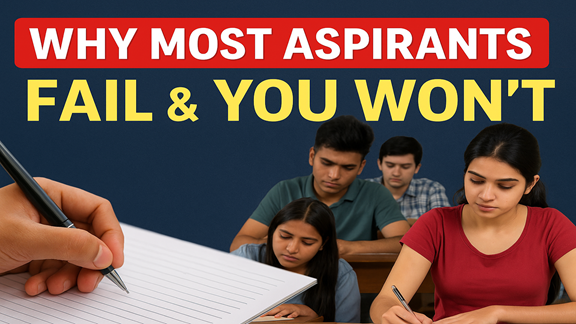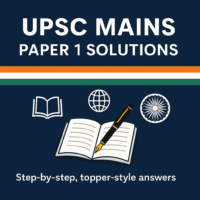Ethical Concerns and Dilemmas in Government and Private Institutions in india
Ethical Concerns and Dilemmas in Government and Private Institutions in India
Ethical concerns and dilemmas are prevalent in both government and private institutions in India, affecting the integrity, efficiency, and trustworthiness of these sectors. Understanding these issues is crucial for fostering a culture of transparency, accountability, and ethical behaviour. Below are some of the key ethical concerns and dilemmas in these sectors, along with examples and justifications.
Ethical Dilemmas Faced by Government in India: Examples and Analysis
Ethical dilemmas in government arise when public officials encounter situations where they must choose between conflicting moral principles, interests, or duties. These dilemmas can challenge their integrity, accountability, and commitment to serving the public good. Here are some specific examples of ethical dilemmas faced by the government in India:
- Corruption and Bribery
Example: Commonwealth Games 2010 Scandal
- Context: The organization of the 2010 Commonwealth Games in Delhi was marred by widespread allegations of corruption, involving inflated contracts, misallocation of funds, and bribery.
- Dilemma: Government officials faced pressure to deliver the event on time, leading some to engage in or overlook corrupt practices to expedite processes and meet deadlines.
- Ethical Conflict: Balancing the need to ensure the success of a high-profile international event against the duty to maintain financial integrity and transparency.
- Conflict of Interest
Example: Allocation of Coal Blocks (Coal Scam)
- Context: The allocation of coal blocks to private companies without a transparent auction process led to significant losses to the exchequer and accusations of favoritism and conflict of interest.
- Dilemma: Officials responsible for the allocations may have faced pressures from political leaders or private interests to favor certain companies.
- Ethical Conflict: Ensuring a fair and transparent allocation process while dealing with external pressures and potential personal or political gains.
- Human Rights and Law Enforcement
Example: Encounter Killings
- Context: Encounter killings, where suspects are killed in purported self-defense by law enforcement, have been a contentious issue in India. Some high-profile cases have raised questions about the legitimacy of these encounters.
- Dilemma: Police officers often face the challenge of tackling dangerous criminals while upholding human rights and the rule of law.
- Ethical Conflict: Balancing the need to ensure public safety and effective law enforcement against the duty to protect human rights and due process.
- Environmental Sustainability
Example: Development vs. Environmental Protection in the Western Ghats
- Context: The Western Ghats, a biodiversity hotspot, faces threats from development projects such as mining, deforestation, and infrastructure expansion. The Gadgil and Kasturirangan Committees provided differing recommendations on balancing conservation with development.
- Dilemma: Government officials must decide between promoting economic development and protecting the environment.
- Ethical Conflict: Ensuring sustainable development while preserving environmental integrity and the livelihoods of local communities.
- Public Health vs. Economic Activity
Example: COVID-19 Lockdowns
- Context: During the COVID-19 pandemic, the Indian government imposed nationwide lockdowns to curb the spread of the virus. While necessary for public health, these measures severely impacted the economy and livelihoods of millions.
- Dilemma: Balancing the need to protect public health with the economic well-being and livelihood of citizens.
- Ethical Conflict: Prioritizing immediate health concerns against long-term economic stability and individual freedoms.
- Transparency and Accountability
Example: Right to Information (RTI) Act Implementation
- Context: The RTI Act empowers citizens to seek information from government bodies, promoting transparency. However, there have been instances where officials have resisted providing information, citing various reasons such as national security or bureaucratic hurdles.
- Dilemma: Balancing transparency with the need to protect sensitive information.
- Ethical Conflict: Upholding the public’s right to know versus safeguarding confidential information and maintaining efficient governance.
- Social Justice and Equity
Example: Reservation Policies
- Context: India’s reservation policies aim to address historical injustices and provide opportunities for marginalized communities. However, these policies sometimes spark debates over fairness and meritocracy.
- Dilemma: Balancing the need to promote social equity and inclusion with the principles of merit and efficiency.
- Ethical Conflict: Ensuring fair representation and opportunities for disadvantaged groups while maintaining standards of merit in public employment and education.
- Whistleblower Protection
Example: Whistleblowers Protection Act Challenges
- Context: The Whistleblowers Protection Act is designed to protect individuals who expose corruption and misconduct. However, whistleblowers often face retaliation, harassment, and threats.
- Dilemma: Encouraging the reporting of unethical behaviour while ensuring the safety and security of whistleblowers.
- Ethical Conflict: Promoting transparency and accountability versus protecting individuals from potential harm and retaliation.
- Disaster Management and Resource Allocation
Example: Relief Efforts Post-Natural Disasters
- Context: After natural disasters like floods and earthquakes, the government must allocate resources for relief and rehabilitation. There have been instances where aid distribution was marred by inefficiency and favoritism.
- Dilemma: Ensuring equitable and efficient distribution of relief resources amidst political and logistical challenges.
- Ethical Conflict: Balancing rapid response to emergencies with fair and just allocation of resources.
- Freedom of Expression vs. National Security
Example: Internet Shutdowns in Jammu and Kashmir
- Context: The government has frequently shut down internet services in Jammu and Kashmir citing security reasons. While intended to maintain law and order, these shutdowns affect communication, access to information, and economic activities.
- Dilemma: Balancing national security concerns with the fundamental right to freedom of expression and access to information.
- Ethical Conflict: Protecting national security while upholding democratic freedoms and minimizing disruption to citizens’ lives.
Conclusion
Ethical dilemmas in government are complex and multifaceted, often involving conflicting duties, interests, and principles. Addressing these dilemmas requires a robust framework of ethical training, transparent policies, accountability mechanisms, and a commitment to public service values. By fostering a culture of integrity and ethical decision-making, government institutions in India can navigate these challenges more effectively and maintain public trust and confidence.
Ethical Dilemmas Faced by Private Institutions in India: Examples and Analysis
Private institutions in India, ranging from large multinational corporations to small businesses, face a variety of ethical dilemmas. These dilemmas often arise from conflicts between profit motives and ethical considerations, stakeholder interests, and legal obligations. Here are some key ethical dilemmas faced by private institutions in India, along with examples and analyses:
- Corporate Governance and Financial Integrity
Example: Satyam Computer Services Scandal (2009)
- Context: Satyam’s founder, Ramalinga Raju, confessed to inflating the company’s financial statements by $1.47 billion. This major corporate fraud raised questions about corporate governance and financial integrity.
- Dilemma: Balancing the pressure to meet financial targets and market expectations with the ethical obligation to provide accurate and truthful financial reporting.
- Ethical Conflict: The need to maintain investor confidence and stock prices versus the duty to uphold transparency and honesty.
- Labour Practices and Worker Rights
Example: Garment Industry Labour Conditions
- Context: The garment industry in India has been criticized for poor working conditions, low wages, and exploitation of workers, particularly in manufacturing hubs like Tirupur and Bengaluru.
- Dilemma: Balancing cost reduction and competitiveness in the global market with the ethical obligation to ensure fair labour practices and decent working conditions.
- Ethical Conflict: The drive to maximize profits and minimize costs versus the responsibility to provide fair wages and safe working environments for workers.
- Environmental Sustainability
Example: Vedanta’s Mining Operations in Niyamgiri Hills
- Context: Vedanta Resources faced opposition for its bauxite mining project in the Niyamgiri Hills, which is a sacred land for the Dongria Kondh tribe and a biodiverse region.
- Dilemma: Balancing the pursuit of economic development and resource extraction with the ethical obligation to protect the environment and respect indigenous rights.
- Ethical Conflict: The need to exploit natural resources for economic gain versus the duty to preserve the environment and uphold social justice for indigenous communities.
- Product Safety and Consumer Protection
Example: Maggi Noodles Controversy (2015)
- Context: Nestlé India faced a major crisis when its popular product, Maggi noodles, was found to contain excessive levels of lead and monosodium glutamate (MSG), leading to a nationwide ban and recall.
- Dilemma: Balancing the imperative to maintain product quality and safety with the pressures of cost-cutting and profit maximization.
- Ethical Conflict: Ensuring consumer safety and transparency versus the risk of financial loss and reputational damage.
- Data Privacy and Security
Example: Data Breaches in Banking Sector
- Context: Several Indian banks have faced data breaches that compromised customer information, raising concerns about data privacy and security.
- Dilemma: Balancing the need to protect customer data and privacy with the challenges and costs of implementing robust cybersecurity measures.
- Ethical Conflict: The duty to safeguard sensitive customer information versus the financial and operational constraints of enhanced security infrastructure.
- Conflict of Interest
Example: Pharmaceutical Industry Practices
- Context: The pharmaceutical industry in India has been scrutinized for unethical practices such as incentivizing doctors to prescribe specific drugs, leading to conflicts of interest.
- Dilemma: Balancing the goal of increasing sales and market share with the ethical obligation to ensure that medical professionals act in the best interest of patients.
- Ethical Conflict: The pursuit of business growth and profit versus the need to maintain ethical standards in healthcare and avoid undue influence on medical decisions.
- Corporate Social Responsibility (CSR)
Example: CSR Spending and Impact
- Context: The Companies Act, 2013 mandates that certain companies spend 2% of their average net profits on CSR activities. However, some companies have been criticized for viewing CSR as a box-ticking exercise rather than a genuine effort to contribute to societal welfare.
- Dilemma: Balancing the legal requirement and public expectation to engage in CSR with the company’s strategic interests and financial goals.
- Ethical Conflict: The duty to contribute meaningfully to societal development versus the tendency to prioritize superficial or low-impact CSR activities for compliance or marketing purposes.
- Advertising and Marketing Ethics
Example: Misleading Advertisements
- Context: The Indian advertising industry has faced numerous cases of misleading advertisements, particularly in sectors like health and wellness, where products are often marketed with exaggerated or false claims.
- Dilemma: Balancing the need to attract customers and boost sales with the ethical obligation to provide truthful and non-deceptive information.
- Ethical Conflict: The drive to maximize market reach and profitability versus the responsibility to maintain honesty and integrity in advertising.
- Whistleblower Protection
Example: Limited Protections for Whistleblowers
- Context: Employees in private companies who expose unethical practices often face retaliation, such as harassment, demotion, or dismissal, due to inadequate protections for whistleblowers.
- Dilemma: Encouraging ethical behaviour and transparency within the organization while protecting whistleblowers from adverse consequences.
- Ethical Conflict: Promoting a culture of integrity and accountability versus the fear of internal dissent and potential damage to the company’s reputation.
- Fair Competition and Anti-Competitive Practices
Example: Price Fixing in Cement Industry
- Context: The Competition Commission of India (CCI) has penalized several cement companies for cartelization and price fixing, which harms fair competition and consumer interests.
- Dilemma: Balancing the drive to maximize profits and stabilize market positions with the ethical obligation to engage in fair competition and comply with regulatory standards.
- Ethical Conflict: The pursuit of business success and market dominance versus the duty to uphold competitive integrity and consumer fairness.
Ethical dilemmas in private institutions in India are multifaceted and often involve a delicate balance between profit motives and ethical responsibilities. Addressing these dilemmas requires a strong commitment to ethical principles, robust regulatory frameworks, and a culture of integrity and transparency. By navigating these challenges effectively, private institutions can enhance their reputation, build trust with stakeholders, and contribute positively to society.
Resolving ethical dilemmas in Public Administration
Resolving ethical dilemmas in Indian public administration involves navigating complex situations where competing ethical principles, personal values, and professional duties collide. Public administrators often face decisions where the right course of action is not clear-cut, requiring a balanced approach to uphold integrity, fairness, and public trust. Here are key strategies for resolving ethical dilemmas effectively:
- Understand the Ethical Dilemma
- Clarify the Issue: Identify the conflicting values or principles involved. Understanding all facets of the dilemma is crucial before any decision can be made.
- Gather Information: Collect all relevant facts and data to understand the context and the implications of different courses of action.
- Refer to Codes of Ethics and Legal Frameworks
- Consult Relevant Laws and Regulations: Ensure that all options considered are within the legal framework to avoid unlawful decisions.
- Adhere to Professional Codes: Professional ethics codes provide guidelines and standards that can help in making decisions aligned with broadly accepted ethical norms in public administration.
- Apply Ethical Theories and Principles
- Utilitarian Approach: Consider which option would result in the greatest good for the greatest number. This approach focuses on the outcome or consequences of the decision.
- Deontological Approach: Evaluate the actions themselves, not just the outcomes. This principle is based on whether the actions are right or wrong under a series of rules.
- Virtue Ethics: Reflect on what a virtuous person would do in the same situation. This approach focuses on the character traits that might guide one’s decisions.
- Stakeholder Analysis
- Identify Affected Parties: List all individuals and groups who will be impacted by the decision.
- Assess Impact: Consider how each action affects these stakeholders. This analysis can help prioritize the interests and rights of those involved or affected.
- Consultation and Advice
- Seek Counsel: Engage with colleagues, superiors, or ethical officers within the organization for advice. Different perspectives can provide insights that one may not have considered.
- Transparent Communication: Discussing the dilemma openly with stakeholders can sometimes lead to innovative solutions that reconcile conflicting interests.
- Decision-Making
- Make an Informed Decision: Based on the analysis, laws, ethical codes, and consultations, make a decision that best aligns with ethical practices and public service commitment.
- Document the Decision Process: Keeping a record of the decision-making process and the rationale behind the decision is crucial for accountability and future reference.
- Implement and Reflect
- Implement Decisively: Once a decision is made, implement it with integrity and transparency.
- Monitor Outcomes: Observe the effects of the decision to ensure that it achieves the intended ethical outcomes.
- Reflect and Learn: Post-decision reflection is vital. Consider what was learned during the process and how it can inform future decisions.
Example Scenario: Awarding a Government Contract
Suppose a senior official in the Indian Public Administration faces a dilemma in awarding a government construction contract. Two firms have submitted bids: one is a local firm that offers a higher price but promises more jobs for local workers, and the other is an outside firm with a lower bid but fewer benefits for the local community.
Resolution Steps:
- Clarify the Dilemma: Balancing economic efficiency (lower cost) versus social benefits (employment for locals).
- Consult Regulations and Ethical Guidelines: Review procurement laws and ethical guidelines regarding fairness and anti-discrimination.
- Utilitarian Approach: Assess which decision maximizes overall benefits for the community.
- Stakeholder Analysis: Evaluate the impact on local employment and economic savings.
- Seek Counsel: Discuss options with procurement and legal advisors.
- Make an Informed Decision: Choose the option that offers the best balance of cost efficiency and community benefit, adhering to legal and ethical standards.
- Implement and Reflect: Execute the contract award transparently and monitor the project for intended and unintended consequences.
Resolving ethical dilemmas in public administration requires a structured approach to ensure decisions are fair, legal, ethical, and aligned with the broader goals of public service. Through continuous learning and adherence to ethical principles, public administrators can enhance their ability to navigate these challenging situations effectively.
Conclusion
Addressing ethical concerns and dilemmas in government and private institutions in India requires a multifaceted approach that includes robust legal frameworks, effective enforcement mechanisms, continuous ethical training, and a culture of transparency and accountability. By acknowledging and actively managing these ethical challenges, both sectors can work towards improving their integrity and effectiveness, thereby enhancing public trust and contributing to sustainable development.
PRACTICE QUESTIONS
Q1: Analyse the ethical challenges faced by private sector employees who encounter corrupt practices within their organizations. What ethical dilemmas might they face, and how should they address them to uphold both legal and moral obligations?
Q2: Discuss the ethical issues involved in the use of personal data by private companies for profit. What responsibilities do these companies have towards their users, and how can users’ rights be protected?PE 1 Summary/Intro: Done
Movie/Real Life
In the movie “Shool” (1999), where Manoj Bajpayee plays an honest and upright Inspector Samar Pratap Singh, an IPS officer posted in Bihar.
Inspector Samar Pratap Singh is transferred to a town rife with corruption, political interference, and organized crime, where the local MLA, Bachhu Yadav, controls everything. Samar Singh is a man of principles and is determined to uphold the law. However, he is soon caught in an ethical dilemma when the corrupt political system, criminals, and even his own department pressure him to compromise his principles.
Ethical Dilemma:
Samar faces an ethical dilemma between:
- Following his ethical duty as a law enforcement officer, fighting crime and corruption, and upholding justice.
- Bowing to the immense political and criminal pressure to stay silent, which would protect his family and career but would mean compromising on his integrity and values.
Conflict:
On one side, Samar Singh wants to do what’s morally and ethically right by arresting the criminals, including the influential politician, but this would risk his life, his career, and his family’s safety. On the other hand, if he gives in to the pressure and compromises with the corrupt system, he would betray his principles and his duty as an IPS officer.
Resolution:
Ultimately, Samar Pratap Singh chooses to stand by his ethical values, even though it costs him heavily, including personal losses. He refuses to be a part of the corrupt system and continues his fight against crime and injustice, reflecting the integrity, courage, and commitment to duty that an ideal civil servant should embody.
Conclusion:
In “Shool”, the character of Inspector Samar Pratap Singh demonstrates how an honest IPS officer can face ethical dilemmas when dealing with a corrupt political and administrative system. The movie highlights the constant struggle civil servants often face between maintaining integrity and succumbing to pressure, with Samar ultimately choosing to uphold his ethical duty at great personal cost.
Case Study
Rajesh Kumar, an IAS officer serving as the District Magistrate (DM) of a district hit hard by a pandemic, is facing an unprecedented crisis. There is a severe shortage of medical resources, especially oxygen cylinders, ventilators, and ICU beds. The demand for these resources has skyrocketed, and the district administration has only a limited supply. As the pandemic worsens, political pressure mounts to allocate resources to influential individuals, while ordinary citizens, especially the economically weaker sections, are left struggling to access life-saving care.
Rajesh is responsible for distributing these medical resources equitably, but he is being pressured by powerful political leaders and business elites to prioritize certain people. Meanwhile, his ethical duty is to ensure that the most vulnerable and critically ill citizens receive the necessary resources, but the influence of the powerful is hard to ignore.
Stakeholders:
- Rajesh Kumar (District Magistrate): Responsible for the fair and ethical distribution of scarce medical resources.
- Political Leaders and Business Elites: Pressuring Rajesh to allocate resources to influential people.
- Ordinary Citizens (Especially the Poor and Vulnerable): Desperately in need of medical resources and depending on Rajesh for fair access.
- Healthcare Providers (Doctors and Hospitals): Struggling to treat patients effectively without sufficient medical supplies.
- Media: Closely observing how the administration handles the situation, which can affect public perception.
- State Government: Monitoring the crisis and expecting the district administration to manage the resources effectively while maintaining public order.
Ethical Dilemma:
Rajesh is caught in a conflict between two duties:
- Duty to Follow Ethical Principles of Equity and Fairness: Ensure that the most critically ill patients and the vulnerable receive priority access to scarce medical resources, regardless of their social or political influence.
- Pressure from Powerful Individuals: Yielding to political pressure from influential people would protect Rajesh’s career, reduce political conflict, and avoid confrontation but would result in an unfair allocation of life-saving resources.
Alternatives:
- Yield to Political Pressure and Allocate Resources to Influential Individuals:
- Pros: Protects Rajesh’s career from political fallout, maintains smooth relations with powerful individuals, and ensures continued political support.
- Cons: Violates principles of fairness and equity, compromises the trust of ordinary citizens in the administration, and may lead to loss of lives among the vulnerable. Sets a dangerous precedent of bending to political influence in crises.
- Distribute Resources Based on Medical Need and Vulnerability:
- Pros: Upholds ethical standards of fairness, ensures that the most critically ill and vulnerable receive life-saving care, and maintains public trust in the administration. This also sets a strong example of integrity and ethical leadership.
- Cons: Could result in severe political backlash, risk to Rajesh’s career, and potential challenges from powerful individuals. There may also be short-term unrest from influential groups who feel sidelined.
- Seek Additional Resources from Higher Authorities and Negotiate with Political Leaders:
- Pros: Engages higher authorities to provide additional resources, which could reduce the immediate crisis and relieve pressure from powerful individuals. Rajesh can use communication skills to negotiate a fair distribution strategy with political leaders.
- Cons: There may be delays in receiving additional resources, and the short-term crisis may continue. This may also give the impression that Rajesh cannot handle the situation independently.
- Divide Resources Equally Between Influential Individuals and Ordinary Citizens:
- Pros: Temporarily resolves political pressure and allocates some resources to the vulnerable, reducing public criticism while keeping influential individuals satisfied.
- Cons: Compromises fairness and ethical standards, as critical medical decisions should be based on need, not influence. It may not save the most lives and may lead to the perception of weak ethical leadership.
Best Alternative: Distribute Resources Based on Medical Need and Vulnerability (Alternative 2)
Solution:
The best course of action for Rajesh is to distribute medical resources based on medical need and vulnerability, prioritizing the critically ill and vulnerable populations. This approach is rooted in the ethical principles of fairness, justice, and compassion, and Rajesh’s duty as a public servant is to ensure that life-saving care reaches those who need it most.
Key Steps for Implementation:
- Establish Clear Medical Criteria for Resource Allocation:
- Rajesh should consult with medical experts to establish transparent, evidence-based criteria for prioritizing patients based on the severity of illness, vulnerability (elderly, economically disadvantaged, etc.), and critical medical needs.
- Communicate Transparently with All Stakeholders:
- Rajesh should use his communication skills to explain the resource allocation strategy clearly to political leaders, influential individuals, and the public. By emphasizing that the decisions are based on medical necessity and public welfare, Rajesh can mitigate some political backlash.
- Seek Additional Support from the State Government:
- Rajesh can also appeal to the State Government for additional resources and logistical support. By proactively seeking help, Rajesh can strengthen his position and demonstrate that he is handling the crisis with integrity and resourcefulness.
- Involve Civil Society and Media:
- Rajesh should involve civil society organizations and the media to highlight the transparent and fair approach being adopted. This will build public trust and reduce the perception that resources are being allocated unfairly.
- Monitor the Situation:
- Rajesh should ensure that the situation is monitored closely and adjustments made as needed. Data should be collected regularly to assess whether the resources are reaching the right people and whether further action is required.
Justification:
- Upholding Ethical Integrity: By distributing resources based on medical need and vulnerability, Rajesh adheres to the core ethical principles of fairness, integrity, and responsibility to serve the public equitably. This decision ensures that the most lives are saved and strengthens public trust in governance.
- Leadership and Decision-Making: Rajesh’s leadership will be demonstrated through his courage to stand firm against political pressure and focus on the welfare of the broader population. Making decisions based on need rather than influence is a hallmark of ethical leadership.
- Long-Term Public Trust: While there may be immediate backlash from political leaders, Rajesh’s decision will foster long-term public trust in the administration’s ability to serve without bias or corruption. This also strengthens the relationship between the government and its citizens during crises.
By standing firm on ethical principles, Rajesh Kumar sets an example of integrity, leadership, problem-solving, and communication in public service, demonstrating that difficult decisions can be made ethically even under immense pressure.
Glossary: Dilemma: A situation in which a difficult choice must be made between two or more equally undesirable alternatives.
Ethical Dilemma: A moral conflict where a person must choose between two or more ethically challenging options, often involving conflicting values or duties.
Social Justice: The pursuit of fairness and equality in society, ensuring that all individuals have equal access to rights, opportunities, and resources.
Whistleblower: A person who exposes unethical or illegal activities within an organization, often at personal risk, in order to protect the public interest.















